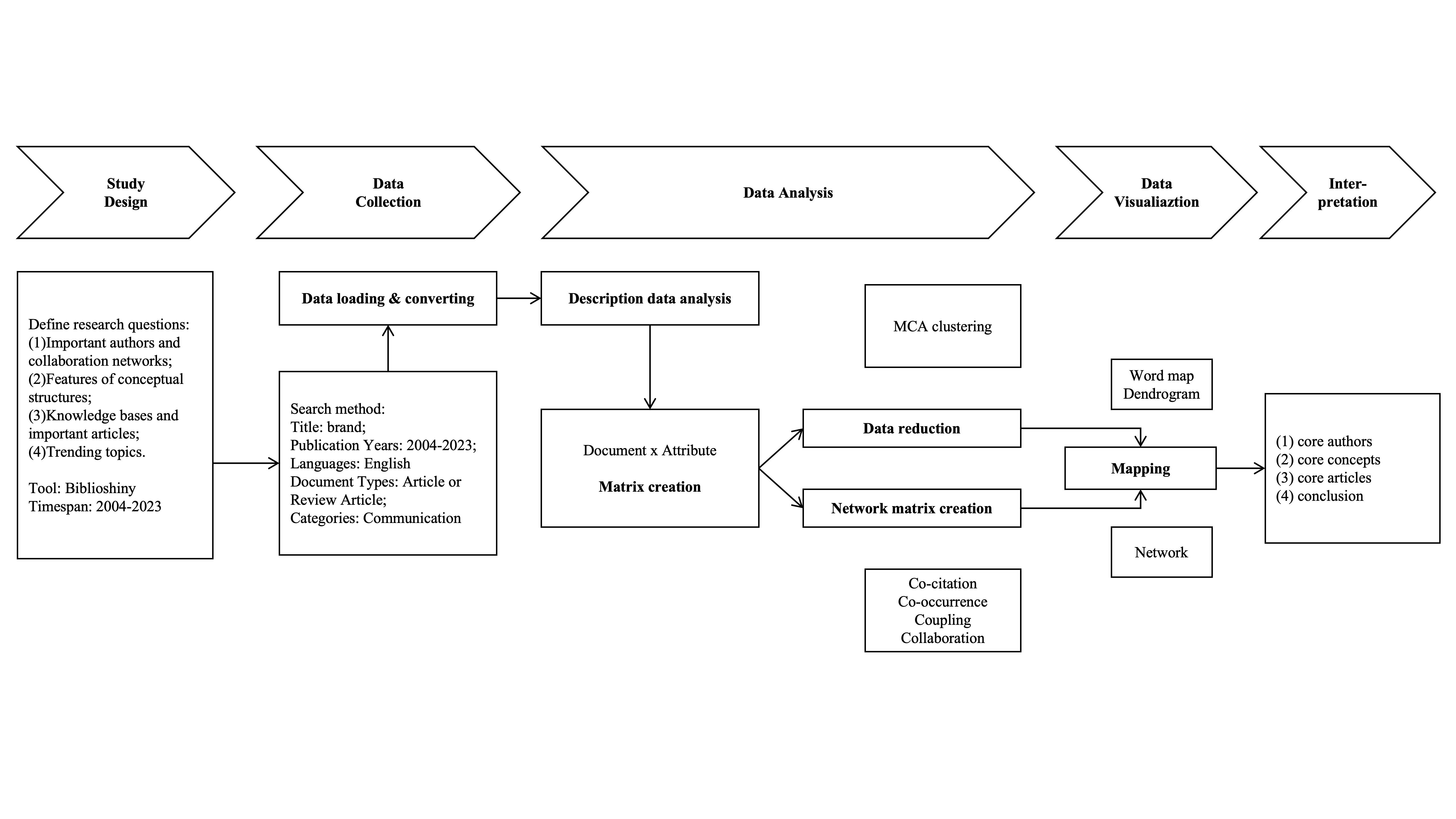bibliometrix

A standard workflow for science mapping consists of five steps: study design, data collection, data analysis, data visualization and interpretation. (Zupic & Cater, 2015)
Study design:
Scholars define the research questions and choose the appropriate bibliometric methods. And three general types of research questions can be answered using bibliometrics for science mapping:
- identifying the knowledge base of a topic or research field and its intellectual structure;
- Examining the research front (or conceptual structure) of a topic or research field;
- Producing a social network structure of a particular scientific community
Choose the timespan/ time slices — the most important
Data collection: Select, filter, export
Data analysis: descriptive analysis, network extraction
- Co-word analysis: Co-word analysis uses the most important words or keywords of documents to study the conceptual structure of a research field. It is the only method that uses the actual content of the documents to construct a similarity measure; the others connect documents indirectly through citations.
- Co-author analysis: examines the authors and their affiliations to study the social structure and collaboration networks.
- Citation analysis: Citation analysis can be decomposed into bibliographic coupling and co-citation analysis.
- Bibliographic coupling (Kessler, 1963) analyses the citing documents, whereas co-citation analysis (Small, 1973) studies the cited documents. Although bibliographic coupling is helpful in detecting the connections of research groups (Yang, Han, Wolfram, & Zhao, 2016), co-citation analysis, when examined over time, is also helpful in detecting a shift in paradigms and schools of thought. Usually, co-citation analysis is performed for mapping older papers (prospective analysis – it is dynamic and is best performed within different time slices), whereas bibliographic coupling is used to map a current research front (retrospective analysis – it does not change over time). Recently, Klavans and Boyack (2017) suggested that direct citations are more accurate in representing a research front than bibliographic coupling and co-citation.
![[20-11-25_biblioshiny_intro.pdf]]
All articles on this blog are licensed under CC BY-NC-SA 4.0 unless otherwise stated.